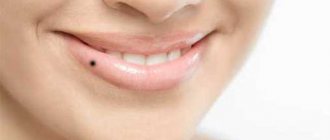Medical causes of gray complexion in men and women
Oxygen has bacteriostatic properties, by which it inhibits the growth of pathogens. Oxygen inactivates viruses and participates in metabolic processes. Its deficiency increases anaerobic processes in tissues, leading to a shift in the acid-base balance towards oxidation.
Blood carries oxygen throughout the body and when its transport function is disrupted, a lack of oxygenated blood occurs.
Gray complexion (the reasons for women and men are identical) is an indicator of limited blood flow and oxygen supply. Often, based on changes in the shade of the skin, a specific disease can be suspected.
Some conditions impair blood flow and prevent it from being oxygenated:
- late stage chronic kidney disease or kidney failure;
- incurable cancer;
- chronic heart failure;
- chronic obstructive pulmonary disease.
Many conditions are emergencies and may require immediate medical attention:
- suffocation from a foreign object;
- aspiration pneumonia;
- heart attack;
- emphysema.
Digestive failure
Pale, gray skin color indicates complications of peptic ulcer disease. In chronic diseases of the small intestine, skin changes are observed in the form of peeling, decreased elasticity of the skin, which acquires a grayish tint.
With chronic disruption of the digestion of food, transport of nutrients and absorption of vitamins, changes in the skin occur. Thus, with a deficiency of retinol (vitamin A), the skin becomes hard, covered with scales, and acquires a gray-yellow tint.
Hypothyroidism
An underactive thyroid gland is a condition in which the thyroid gland does not produce enough hormones.
The disease may not cause noticeable symptoms in the early stages. Slow metabolism contributes to obesity, joint pain, and affects the condition of the skin: it becomes dry and acquires a gray tint.
Adrenal insufficiency
The adrenal glands produce hormones. Their deficiency refers to non-specific symptoms such as body aches, fatigue, nervousness, sleep disturbances and digestive problems.
Additionally, the following happens:
- dizziness;
- hair loss;
- change in skin color (hyperpigmentation, grayness).
Mild adrenal insufficiency is often caused by chronic stress.
Thyrotoxicosis
An overactive thyroid gland occurs when it produces too much of the hormone thyroxine. Hyperthyroidism can speed up your metabolism, causing unintentional weight loss and a fast or irregular heartbeat.
It also causes many symptoms that make diagnosis difficult:
- fatigue, muscle weakness;
- thinning of the skin;
- thin, brittle hair;
- gray complexion.
Liver pathologies
Disorders of the hepatobiliary system often lead to hyperpigmentation. The dark spots can be a dirty gray color and occupy large areas of the skin, especially exposed areas of the skin.
In the later stages of chronic kidney disease, with renal failure, blood flow and oxygen saturation slow down, which leads to a change in skin color, it becomes pale gray.
Bacterial endocarditis
Endocarditis is an infection of the endocardium, the inner lining of the chambers and valves of the heart. Endocarditis occurs when germs from another part of the body, such as the mouth, spread through the bloodstream and attach to damaged areas of the heart. If left untreated, endocarditis can damage or destroy the heart valves and lead to life-threatening complications.
Symptoms are usually nonspecific and include fever, chills, anorexia, myalgia and shortness of breath, pale skin, and a grayish-yellow discoloration.
Hemochromatosis
This is a condition caused by excessive absorption of iron from the foods a person consumes, resulting in increased concentrations of iron in the blood of the liver, heart and pancreas. Some people with hereditary hemochromatosis have no symptoms.
Early signs often overlap with those of other common conditions:
- pain in joints, stomach;
- fatigue, weakness;
- heart failure;
- bronze or gray skin color.
Early systemic scleroderma
Scleroderma, or systemic sclerosis, is a complex autoimmune disease that affects many organ systems in addition to the skin. The immune response tricks the tissue into “thinking” it is damaged.
This causes inflammation. The body produces too much collagen, which leads to scleroderma. An increased amount of collagen in the skin and other tissues causes spots to appear on the skin. They can be oval-shaped and cover wide areas of the torso and limbs. The skin becomes shiny and gray.
Porphyria cutanea tarda
Porphyria refers to a group of disorders that result from the accumulation of natural chemicals that produce porphyrin in the body. It is necessary for the functioning of hemoglobin, which, together with porphyrin, binds iron and carries oxygen to organs and tissues.
Gray complexion
In pathological conditions, porphyrins accumulate in the skin and, when exposed to sunlight, cause symptoms:
- sudden painful change in skin color and swelling;
- blisters on exposed areas, usually on the arms, hands, and face;
- itching
Recklinghausen's neurofibromatosis
Neuroendocrine tumors of the pancreas are a group of cancers that can arise in the hormone-producing cells of the organ. Some inherited syndromes increase the risk of developing this type of cancer, including von Recklinghausen disease.
Pancreatic tumors sometimes do not cause symptoms, and if they are present, they include pigmentary disorders, among others. Light gray or dark brown spots appear on the skin of the trunk, limbs, and less often on the face and neck.
Dysplastic nevus syndrome
These are benign neoplasms on the skin surface; they are a collection of nerve cells that produce melanin.
The surface of the nevus is covered with small tubercles and has a heterogeneous color, from gray to brown. The color depends on how deep the pigment is in the epidermis.
Leopard syndrome
An autosomal dominant disorder, it is often characterized by cardiac abnormalities and abnormalities of various organs. Expressed by obvious signs: multiple spots (lentigines) of a “café au lait” color, the appearance of which is caused by the accumulation of melanocytes in the basal layer of the epidermis.
With the disease, pulmonary artery stenosis often develops, and the skin often acquires a bluish-gray tint.
Peutz-Jeghers syndrome
A rare autosomal dominant disease. It is characterized by the appearance of polyps in parts of the digestive system, multiple pigment spots in the lips and mucous membrane of the cheeks. Gray-bluish spots are observed on the dorsum of the hands, feet, and sometimes on the face.
Localization of acanthosis on the skin. What symptoms accompany the progression of acanthosis?
The above-described skin changes are most often found on the skin of the inguinal-femoral fold, intergluteal region, elbow bends, on the fold between the back of the head and neck, on the skin of the armpits, in the popliteal region, on the skin under the mammary glands. It is possible that a triad of symptoms may appear on other parts of the body (face, side of the neck and navel area).
In the early stages of acanthosis development, the patient's skin gradually darkens. Many people try to wash their skin thoroughly, thinking that it is dirty. As the disease progresses, the skin begins to darken even more, becomes rough, dry, and thickens. The natural pattern of the skin becomes more pronounced and deep.
Poor lifestyle and bad habits as causes of gray complexion
Little rest and walks, short sleep at night, poor diet - all this affects the complexion. It fades over time and becomes faded.
Poor nutrition, starvation of the body. Diet against gray complexion
Gray complexion (the reasons for women in some cases differ from men) can occur due to poor nutrition and active smoking.
In women, the cause is often strict diets that lead to dehydration and sleep problems. During a diet, the body does not receive enough vitamins, nutrients, and water. The volume of subcutaneous blood flow decreases, which makes the skin pale and painful.
You can restore vibrant, fresh color with the help of vitamins, juices, and water, which should be taken in sufficient quantities during diets.
Abuse of coffee and alcoholic beverages
Frequent consumption of caffeine increases the amount of cortisol, ephedrine and norepinephrine, as is the case in the body's response to stress. Excess coffee negatively affects the digestive system. To restore fresh colors to your face, you should reduce the number of cups of coffee you drink per day to 4.
Alcohol has a detrimental effect on the skin. Pores expand, the skin becomes rougher, wrinkles multiply, and the face takes on an unhealthy hue. Under the influence of frequent alcohol consumption, red blood cells and other blood cells die, which leads to numerous chemical reactions that affect skin color changes. It turns red or dull gray over time.
Stress, lack of sleep
Stress affects skin condition. It becomes dull and lifeless. Strong emotions increase cortisol levels, which affect the regulation of blood flow to the skin.
Sleep is the time when cells repair and rejuvenate. If this period is shortened, the cells stop working optimally. To look your best, you should sleep at least 8–9 hours a night.
Hypodynamic lifestyle
Physical inactivity leads to a lack of oxygen, and the result is a lack of oxygenated blood, which leads to grayness and pallor of the skin.
Active sports at least 3 times a week will help restore a healthy appearance.
Frequent and intense tanning, exposure to cold on the skin
Excessive use of tanning leads to loss of elasticity, disruption of water balance, and promotes photoaging of the skin. Subsequently, the process of hyperpigmentation occurs. Therefore, over time, when the beautiful tan goes away, she looks dull and gray.
Low temperatures also negatively affect the condition of the skin. In winter, the skin cleanses more slowly, so an unhealthy gray complexion is caused by accumulated dead cells, dust, and dirt on the upper layer of the epidermis.
Cosmetic products designed specifically for the cold season will help preserve your skin during the cold season. These are creams, masks, lotions, which should be selected according to the hydrogen balance of the skin.
Lack of quality skin care
The skin constantly sheds dead cells, but if the process does not work effectively, the skin appears dull, unhealthy, and tired, which accentuates wrinkles.
Dryness is a common cause of gray skin. Exfoliation removes the outer layer, leaving the skin surface smooth and clear. To moisturize, you should use products with ceramides, which restore the barrier function of the skin, retain water, and hyaluronic acid, which strengthens cellular tissue.
Age-related changes
Along with gray hair, loss of skin elasticity is a characteristic sign of old age. It is mainly caused by loss of collagen and elastin. Complexion and texture also change over time. As you age, the skin becomes thinner - in some cases almost transparent, the complexion becomes dull, becomes gray, and age spots appear.
Often the skin turns blue from bruises, women are especially susceptible to them. Over the years, the skin also becomes thinner and loses some of the protective fat layer that protects blood vessels from injury.
Aspirin, anticoagulants, and antiplatelet agents reduce the blood's ability to clot. As a result, bleeding due to damaged capillaries takes longer than usual, which contributes to the appearance of large bruises on the body of older people.
For prevention, you should donate blood to determine the number of platelets and protein levels for early detection of possible diseases.
Darkening of the skin due to malignant tumors
Skin color may change due to malignant tumors of internal organs, including lymphomas. This phenomenon is called acanthosis nigricans maligna (malignant acanthosis nigricans
) and is accompanied by dark symmetrical spots and stripes in the neck, armpits, external genitalia, and inguinal folds.
Acanthosis nigricans also occurs in benign diseases of the nervous and endocrine systems in young people.
For any change in skin color of unknown origin, you should consult a dermatologist. After the initial diagnosis, this doctor can refer the patient to an appropriate specialist. Darkening of the skin cannot be ignored, because this sign is a symptom of many serious diseases.
Diagnosis of gray complexion
To understand what problems have arisen in her body, a woman should pay attention to alarming symptoms.
The reasons for the appearance of gray color on the face may be associated with disorders:
- heart diseases;
- improper functioning of the liver;
- skin diseases;
- psychoemotional disorder;
- improper skin care;
- malnutrition, lack of vitamins.
Analyzes
At the first stage, you should take a blood test: general and biochemical.
At the next stage, you can do additional research:
- donate blood for sugar;
- check cholesterol levels;
- perform a glucose tolerance test.
After the results obtained, you may need to contact an endocrinologist, nutritionist or gastroenterologist.
Instrumental diagnostics
If the color disturbance is associated with lung pathology, cardiovascular disorders, hypoxia, then the following studies should be performed:
- X-ray of the lungs;
- Pulse oximetry testing;
- dopplerography;
- ECG;
- Ultrasound of internal organs.
What are the aspects of diagnosis and treatment of acanthosis nigricans?
If darkening of the skin is detected in certain areas of the skin, which does not go away, but only progresses, you should consult a dermatologist. The specialist will conduct a differential diagnosis with Addison's disease, ichthyosis, and Darier's disease. The final diagnosis of acanthosis nigricans is established based on histological examination of the biopsy specimen. If a malignant form is suspected, consultation with an oncologist is required.
Treatment includes therapy for the underlying disease that led to acanthosis and symptomatic therapy. Prescribe general tonic drugs, vitamin complexes, anti-inflammatory ointments, baths with potassium permanganate, zinc preparations, aromatic retinoids. In severe cases - cytostatics and hormonal drugs, neurotropic drugs, antibacterial therapy. All this must be accompanied by a diet.
In case of massive growths of papillomas, they are surgically removed using cryodestruction or electrocoagulation.
Thus, simple darkening of the skin may hide the course of the oncological process, which is not yet manifested by general symptoms, but only by acanthosis. Therefore, contacting a doctor if you suspect acanthosis can improve the prognosis of the course of pathological processes.
Pharmacy drugs
Gray complexion (the causes for women are individual and require diagnosis) in some cases can be corrected with the help of medications, ointments, and vitamins.
Calcium chloride
If the cause of the gray color is a violation of the surface layer of the skin, then this can be corrected with the help of calcium chloride. To do this, soft peeling is carried out with a solution of calcium chloride. A rich cream is applied to the cleansed face, and then the face is wiped with a cotton pad moistened with a 5% calcium chloride solution.
After absorbing the liquid, calcium should be applied to the face a second time. After 3–5 minutes. the liquid is applied a third time. Then the baby soap is foamed and rubbed in a circular motion onto the skin.
The result is a scrub on the face, which is washed off with chamomile infusion. As a result of the combination of calcium chloride and alkali, salts of higher carboxylic acids were formed, which helped restore complexion.
Panthenol ointment
Regenerating drug, 9% Panthenol, has a complex effect on the skin, activates cells, restores microcirculation. The cream can be used daily and also applied under cosmetics. The ointment, as an additional source of pantothenic acid and fats, is well suited for dry, discolored skin.
Ointment Radevit
The drug is indicated for use for external use on irritated skin with increased sensitivity, for the purpose of prevention against aging. It is applied twice a day in a thin layer. The duration of therapy depends on the condition of the skin.
Cream Vitamin “F99”
Dermatotropic product based on linoleic acid and ethyl esters. The ointment is available in two categories: bold and semi-bold. Apply a small layer to the face twice a day.
Thiogamma 600
A drug that regulates lipid and carbohydrate metabolism. Tablets are taken orally, 1 piece. (600 mg) per day.
The course of treatment is from 1 to 2 months. The active substance contained in the drug helps reduce glucose levels and increases the concentration of glycogen in the liver.
Saggy lips
The upper lip signals the state of the stomach, the lower lip indicates the condition of the large and small intestines. If your lips appear saggy, this indicates poor digestion.
Bright red lips indicate high blood pressure and respiratory problems. Dark purple lips are an indicator of excess cholesterol in the body, and pale lips are a sign that the body lacks oxygen.
The skin is the open book of our body. The main thing is to learn to read, and having mastered literacy, use it effectively. If you have skin problems, this does not mean that you are sick. Perhaps this is just a warning about a disease that will arise later. But it is necessary to heed this warning and seek advice from a doctor.
Why are the clouds gathering on our face? What guns will we use to disperse them?
You keep peering into the mirror - trying in vain to understand why your skin has become gray, sickly in appearance, has lost its natural pinkish-matte tint, has ceased to be elastic, smooth and fresh. Perhaps the reason is in the lifestyle, or maybe some diseases are to blame. Now let's try to figure out why the color of your face suddenly turned gray.
Vitamins
The skin always needs vitamins. Deficiency affects the development of negative processes, the skin becomes dull, discolored, and irritated.
Vitamin supplements essential for skin:
| Name | Features of application |
| Hemafemin | Increases estrogen production, restores the immune system, improves complexion, and improves skin elasticity. |
| Vitrum beauty | The drug is a multivitamin, contains amino acids, improves skin structure, normalizes metabolism. |
| Perfectile | Eliminates dry skin, restores radiance to the skin, and maintains skin tone. |
| Imedin | Actively cares for the skin, moisturizes, improves skin color and structure, and is a source of vitamin C and zinc. |
| Laura collagen drink | The dietary supplement Solgar restores water balance, tightens the skin, and improves color. |
It is very difficult to get all the vitamins in everyday life. You can’t get around without additional complexes. They are necessary for the body, skin, and hair.
Homeopathy
Medical practice does not exclude treatment with natural substances in combination with an individual approach.
One of the treatment methods is homeopathic mesotherapy:
- acupuncture: treatment using special needles inserted into specific points on the body;
- homotoxicology: it is based on the use of homeopathic medicines (the method is based on the theory of homotoxin deficiency in humans).
Homeomesotherapy is used in dermatology in the treatment of chronic diseases, in aesthetic medicine to maintain the tone of the facial muscles, eliminate dull complexion and age spots.
Folk remedies to even out skin tone
Gray complexion (the causes in women often depend on the degree of destruction of cells in the surface layer of the skin) can be eliminated with the help of homemade masks.
Carrot mask
Ingredients for preparing the mask according to the first recipe:
- Carrot juice – 1 tbsp. l. (the vegetable can be grated on a fine grater).
- Egg white – 1 tbsp. l.
- Natural yogurt – 1 tbsp. l.
How to cook:
- You need to mix the ingredients until completely dissolved.
- Apply the puree to a clean face and neck.
- Leave the mask on for 20 minutes, then rinse with warm water.
Recipe 2:
- Peel 2-3 large carrots and cut them into small circles. Boil until soft.
- Mash the carrots with a fork in a bowl.
- Gradually add honey (2-3 tablespoons) to the carrots, stirring constantly until the mixture reaches a creamy consistency.
- Add a little olive oil.
- Apply to skin, leave for 10 minutes and then rinse with warm water.
Carrots are an antiseptic, it tones and rejuvenates the skin. Suitable for normal to oily skin. If you add other moisturizing ingredients such as honey and avocado, the mask is suitable for dry skin.
Black tea
Using tea, fruit and oil, this mask will help moisturize your facial skin.
Ingredients:
- brewed black tea, 3 tbsp. l.;
- flour, 3 tbsp. l.;
- kiwi, 1 pc.;
- almond oil extract, 2-3 drops.
How to cook:
- You need to mix flour with almond oil.
- Add brewed tea, mix everything well.
- Remove the ripe part from the kiwi, mash and add to the mixture.
- Apply the resulting mixture to your face and leave for 15–20 minutes.
- Rinse off with warm water.
To refresh your complexion, you can apply a soft cloth soaked in tea and hold for 15 minutes. Next, you should wash your face after drying.
Beer mask
Beer contains B vitamins, hops, saccharides and yeast, which remove dead cells and even out the skin.
Ingredients:
- 1 egg white;
- ½ tbsp. beer (any brand);
- 2 tsp. fresh lime juice.
How to cook:
- You need to beat the egg white, gradually add beer and lime juice.
- Apply the mask to your face.
- After 10 minutes, rinse with warm water.
Peach mask
Peach rejuvenates dull, gray skin, improves elasticity, and increases the level of surface lipids.
Ingredients for the product:
- ½ peach puree;
- yogurt 1 tbsp. l.
How to cook:
- Mash the peach in a small bowl
- Add yogurt, mix everything.
- Apply to face and leave for 10-15 minutes.
- Rinse everything off with warm water.
The reasons for the appearance of a gray complexion in women are not always associated with diseases and aging of the skin. More often it is a cosmetic problem. Signs of hypersensitivity and dryness can always be solved with the help of properly selected creams and cosmetic procedures.
Author: Belyaeva Anna
Reasons causing the violation
Liver abnormalities
Often, in a person, yellow eyes in the corners or throughout the sclera area are caused by increased bilirubin. Other liver diseases can also affect yellowish or brown pupils. Normally, in a healthy body, bilirubin is excreted, as a result of which its breakdown and poisoning by toxic substances do not occur. If for some reason the liver’s function is disrupted, then the person not only experiences yellowing of the sclera of the eyes, but also a gradual change in complexion. The following deviations can influence the development of the problem:
- Hepatitis. With liver disease, there is a destructive effect in the tissues of the internal organ. The disorder can be viral, bacterial, parasitic or toxic in origin.
- Echinococcosis. Yellowness in the eyes is often caused by echinococci, which enter a healthy body after ingesting contaminated foods, water, or during contact with animals.
- Cirrhosis. The deviation is characterized by damage to healthy tissue followed by its replacement by pathological tissue. Against the background of the disease, the organ loses its ability to filter dangerous substances, which include bilirubin. A disease that leads to yellowing of the sclera can appear due to alcohol abuse, an advanced form of hepatitis, or excessive use of antibacterial drugs.
- Oncology. The eyes often turn yellow due to a cancerous tumor, which has a destructive effect on the tissue.
- Helminth infection. When the body is infected by parasites, they quickly damage the liver, which negatively affects the functioning of the organ. Often yellowed whites of the eyes in adults and children are associated with the activity of liver flukes and echinococci.
Ophthalmic diseases
If the whites of the eyes, which were previously white, gradually turn yellow, this may indicate diseases of the visual organs. There are such pathologies that affect yellowing of the eyes:
- Pinguecula. This is a pathological formation, reminiscent of fat, associated with improper fat metabolism. Almost never such yellowness affects vision. The exception is the inflammatory reaction, which is known as pingueculitis. To eliminate the problem, surgical treatment methods are often used.
- Melanoma. Refers to malignant neoplasms, as a result of which the whites of the eyes turn yellow. The pathology is rare, and it is usually difficult to establish a diagnosis in a timely manner.
- Pterygium. With the disease, a pathological growth of the conjunctiva occurs, which soon acquires a white or yellowish outline, creating discomfort when viewing objects.
Other violations
If the patient is constantly bothered by yellow spots around the edges of the eyes, then this may indicate serious problems with the body not related to the liver and ophthalmology. The following pathological conditions can affect the yellowness of the sclera:
- Blood disorders. Regularly yellow corners of the eyes with red streaks can signal ailments from the hematopoietic system. Often problems are caused by such deviations: malaria;
- Babesion, caused by a tick bite;
- hereditary disorders;
- poisoning with hemolytic poisons.
- formation of stones in the organ;











